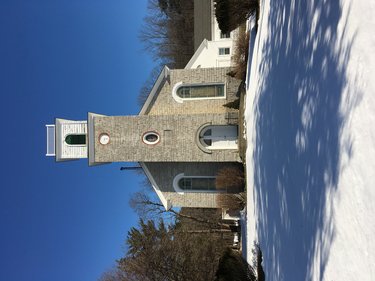Learn about the history and art of the Erie Canal from the state museum’s curator
— Photo by Judy Kimes
The Onesquethaw Reformed Church in New Scotland was built in 1825 of stone rejected by the builders of the Erie Canal. The historical marker in front of the church cites Psalm 118:22, which says, “The stone the builders rejected has become the cornerstone,” meaning, while the apostles referred to Jesus as the stone that was rejected, he became the cornerstone of the Christian religion.
To the Editor:
The Erie Canal was one of the largest public works projects in American history. Built at a time before formal instruction in this new kind of engineering existed, the massive project served as the nation’s first practical school of civil engineering.
Built between 1817 and 1825, the Erie Canal opened the 363 miles between Albany and Buffalo to water transportation. Boat passengers could now travel this distance in five days and in relative comfort compared to the previously required two-week journey in a crowded stagecoach.
Midwestern farmers and manufacturers now had access to more lucrative and distant markets. Freight rates fell by 90 percent compared to the cost of shipping products by ox-drawn carts.
Boomtowns sprung up along its route. New York City became the nation’s most powerful center of international trade. Opportunities abounded. The canal helped New York State become the “Empire State.”
Brad Utter, senior historian and curator at the New York State Museum, will be the speaker for the New Scotland Historical Association’s April program
Honoring the bicentennial of the construction of the Erie Canal, Mr. Utter co-authored “Enterprising Waters: The History and Art of New York’s Erie Canal,” which serves as a companion catalogue to the exhibit at the New York State Museum of the same name and the companion exhibition “Art of the Erie Canal.”
He will discuss the artifacts, documents, images, and artworks that illustrate the history of the Erie Canal from its inception until today. And, focusing on the Capital Region, he will touch on the themes of politics, engineering, and life on the canal.
For a richly informative look at the Erie Canal’s influence on our area and beyond, please come to the association’s April program.
This program will be presented at 7:30 p.m. on Tuesday, April 4, at the Wyman Osterhout Community Center in New Salem on 7 The Old New Salem Road. Admission is always free.
The New Scotland Historical Association Museum will be open for a half-hour before the program.
Judy Kimes
Publicist
New Scotland
Historical Association

